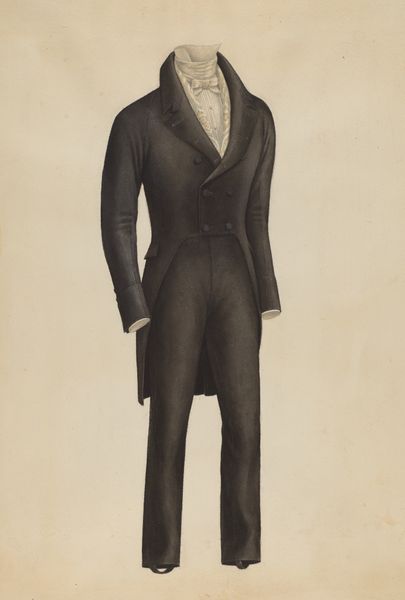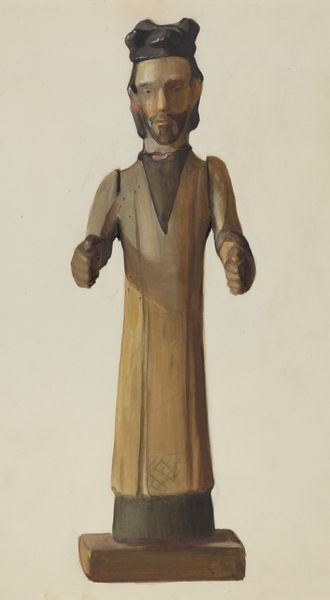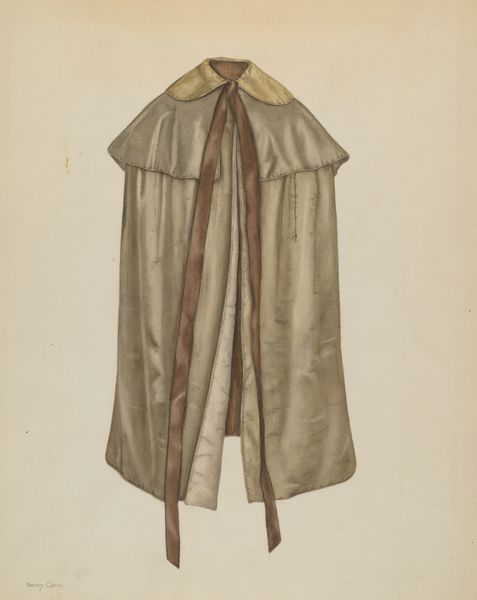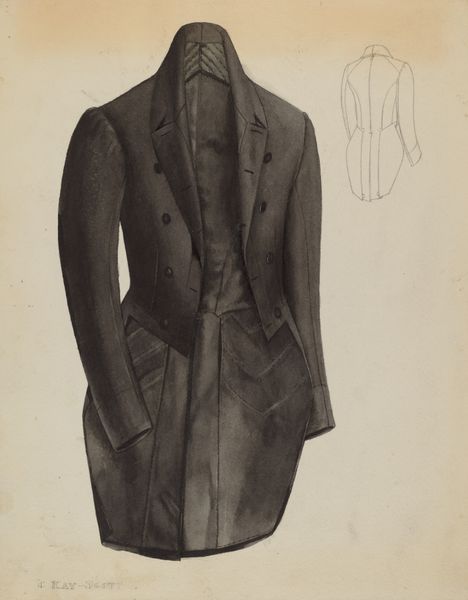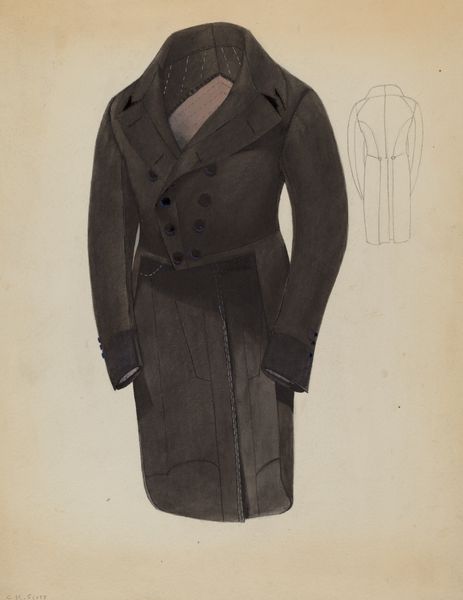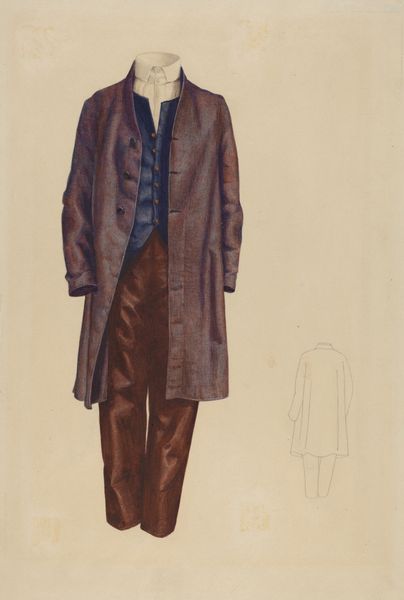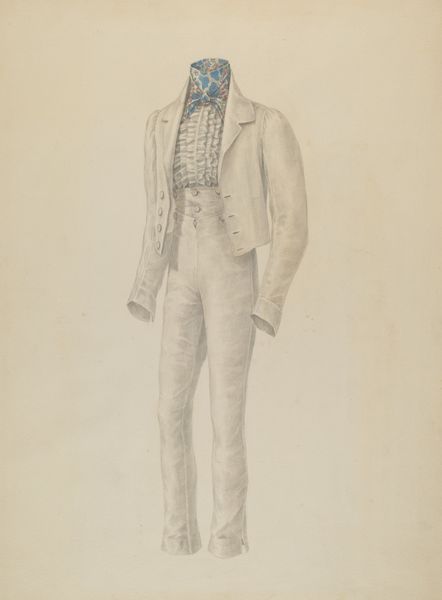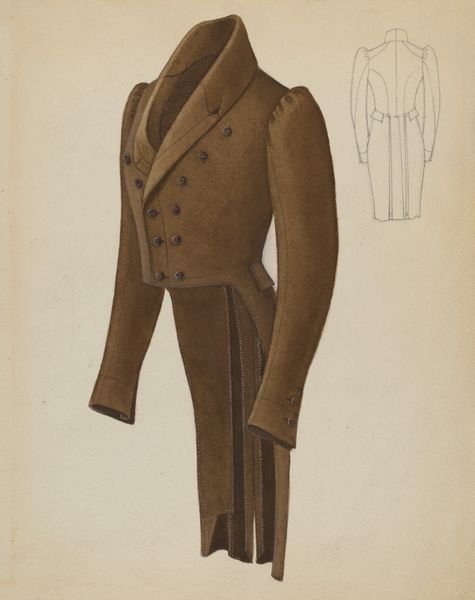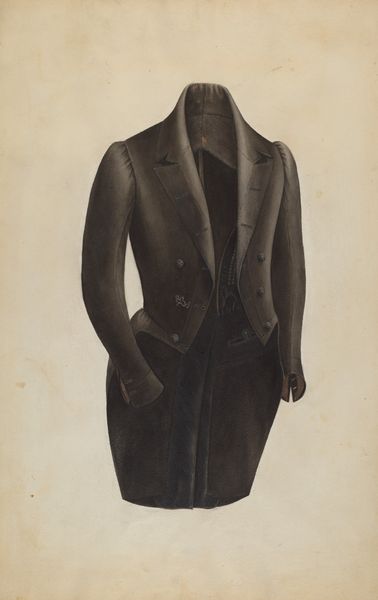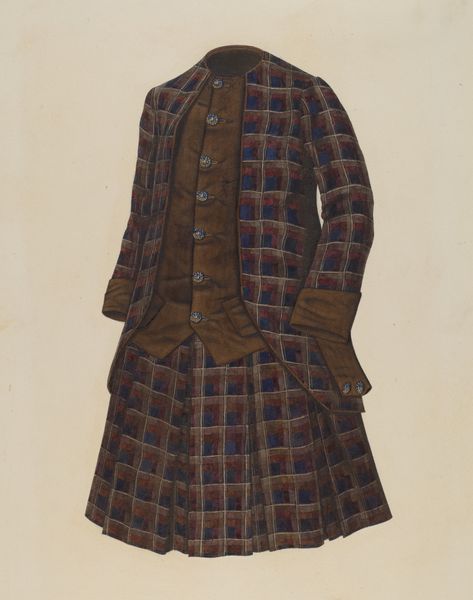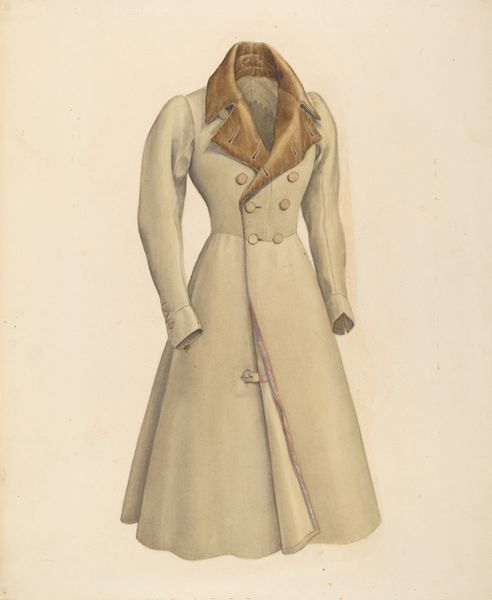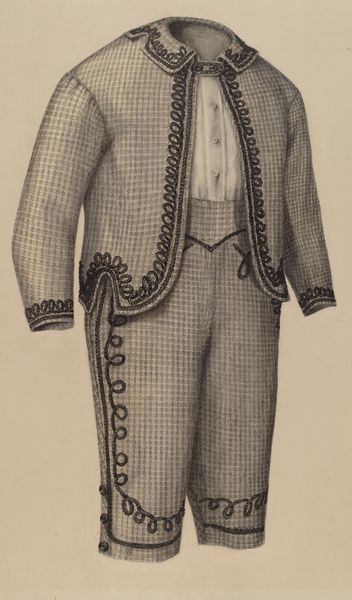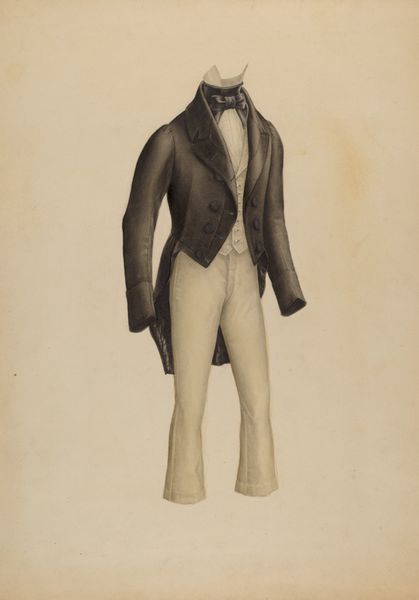
drawing, graphite
#
portrait
#
drawing
#
pencil drawing
#
line
#
graphite
#
graphite
#
realism
Dimensions: overall: 45.5 x 38.2 cm (17 15/16 x 15 1/16 in.)
Copyright: National Gallery of Art: CC0 1.0
Editor: This is Henry De Wolfe’s "Man’s Dressing Gown," a graphite drawing from around 1939. It's just the robe, empty, which gives it an almost haunting quality. How do you interpret this work? Curator: That sense of absence is key. Clothes, especially a dressing gown, are so intimate. It begs the question, whose absence are we feeling? Consider the date, around 1939. This work was produced on the cusp of World War II. Are we perhaps looking at the phantom limb of masculinity, grappling with societal upheaval? The sharp, precise lines seem to contain a tension, a fear of unraveling. Editor: So, the absence becomes a kind of presence? The robe stands in for the anxieties of the time? Curator: Precisely. Think about the rigid lines used to create the garment – this level of controlled detail seems almost desperate, doesn’t it? A symbol of enforced order against the backdrop of global chaos and uncertainty. It highlights not just fashion, but its purpose as a shield. Who gets to wear this robe, what does that protection mean in a time of crisis, and who is denied that security? Editor: That's a powerful reading. I hadn't thought about the implied socio-political context so explicitly. Curator: De Wolfe’s decision to leave the robe empty invites this very questioning. It’s a social commentary disguised as an innocent study of fabric and form, quietly challenging us to examine the unspoken power dynamics embedded within the everyday. Editor: I definitely see it differently now. It's less about the object itself and more about what it represents culturally. Curator: Absolutely, and that’s the enduring power of art – its ability to reflect and refract the complexities of the world around us, inviting us to see and question the historical forces at play.
Comments
No comments
Be the first to comment and join the conversation on the ultimate creative platform.
